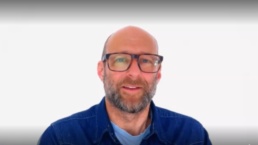Understanding the social enterprise business model is crucial for social entrepreneurs to validate their businesses and ensure their businesses run smoothly. Therefore, the social lean canvas becomes one of the fundamental things that need to be understood by social entrepreneurs.
Before delving into extensive discussions about social enterprise, the Creator of Social Lean Canvas, Rowan Yeoman, who served as the trainer in the first online training held on (4/9), explained the definition of social enterprise. Here, social enterprise refers to something that has a social or environmental purpose and a business model to make that purpose a reality, and it involves figuring out how that thing fits together into something scalable.
“Social Lean Canvas can serve as a framework that holds all aspects in one place, allowing for a comprehensive understanding of the entire business. It integrates the business model and impact model into a system that assists social entrepreneurs in managing the complexity of social business models. This framework encourages social entrepreneurs to gain clarity regarding what they are and are not doing. It also provides a shared common language for understanding, managing, and coordinating their team, advisors, investors/funders, and more,” he explained.
Rowan then explained the concept of a business model. Simply put, a business model involves creating value, delivering value, and managing costs at scale. In the case of social enterprises, social entrepreneurs use a business model to achieve scale for their impact. In this context, both the business and impact models need to be combined into a social business model.
“Iterating through an approach driven by customer feedback to evolve from risky assumptions into a scalable, repeatable social business model,” said Rowan.
Another important concept to understand is the transition from the startup phase to the business phase. He explained that in the startup phase, the social enterprise is focused on discovering the business model, while in the business phase, they execute the business model. This involves building infrastructure, optimising the business model, and achieving economies of scale.
Amorpol Huvanadana, CEO of Moreloop from Thailand, responded with a question. “The challenging aspect for us arises when we are in a half-and-half mode. With limited resources, it becomes quite challenging to serve customers, and there’s uncertainty about whether it’s a scalable business until you’ve spent some time running it and learning in the process. So, you could say we are in a hybrid mode, part startup and part established business,” said Amorpol.
A similar situation is also experienced by PakDone, based in Thailand. Manita Vivatsethachai, the founder and director of PakDone, also expressed her concerns. It appears they also face similar challenges and dilemmas. They are unsure whether they are not doing enough marketing to reach out to their customers or the targeted market is too small and hit its size as the nature of their products are one-time buys.
In response to these concerns, Rowan emphasised the importance of social enterprises thoroughly assessing every component of their customer model. The key questions to consider include: How is value creation happening within this customer model? Do we have the right customers? Do we understand the job that needs to be done, and Do we have the right unique value proposition? Once we identify the areas where things may not be aligned correctly, that’s when we can start making improvements.
He further added that what needs to be ensured is whether there are early adopters who can represent a larger market. Or, are these customers the entire market because the market itself is extremely niche, a concept referred to as a “local maxima.” Social enterprises need to be aware of this because it’s a very niche product, and most people might not want it.
Continuing with discussing the impact model, the impact model is, of course, crucial for social enterprises. It allows social entrepreneurs to communicate what impact they are striving for. The impact model starts with understanding the focus issue, who the participants are, the activities involved, short-term outcomes, medium-term outcomes, long-term outcomes, and the ultimate impact.
Nguyen Thi Phuong Thu, CEO of Tohe Social Enterprise, confirmed the difference between outcomes and impact. She mentioned, “Because I think impact is quite similar to results in the future, and outcomes we can count them in the short term.” She highlighted that, as Tohe Social Enterprise delivers art training for disadvantaged children in Vietnam, it can be challenging to monitor something intangible.
Rowan then explained that the impact model is trying to help us understand things that may look good in the short term but may not be good in the long term. He emphasised the importance of thinking through all aspects of an action. Sometimes, people may believe they did something good in the short term but discover negative consequences in the long term.
For instance, let’s say we want to address homelessness in urban areas. We give money to homeless individuals. As an outcome, the beneficiaries use the money to buy food. The long-term consequences could be positive or negative. For individuals struggling with addiction, they may use the money to buy both food and alcohol. Therefore, we need to seek better solutions, collaborate with other organisations to achieve our goals, rely on research for more accurate measurements, and acknowledge that it’s part of our job to figure out over time what works and what doesn’t work.


